Why Inflammation Matters:
Chronic inflammation is now implicated as a primary factor in a very wide variety of diseases.
inflammation-related diseases are recognized as the most significant cause of death in the world. In fact, chronic inflammatory diseases are attributed to more than half of all deaths worldwide.
Clinical Research bears out these grim statistics:
Research has revealed that certain social, environmental and lifestyle factors can promote systemic chronic inflammation (SCI). That can, in turn, lead to diseases that collectively represent the leading causes of disability and mortality worldwide. These include cardiovascular disease, cancer, diabetes, chronic kidney disease, non-alcoholic fatty liver disease, autoimmune illnesses and neurodegenerative disorders. – Natural Medicine Journal (1)
In this article, we explore the underlying causes of inflammation-related diseases. They involve invaders, infections, inactivity, poor diet, toxins, and stress. We also discuss prevention, signs for early diagnosis and treatment of Systemic Chronic Inflammation.

The Role of Inflammation in Creating Disease
Inflammation is part of the body’s defense mechanism and plays a key role in the healing process. When the body detects an intruder, it launches a natural and miraculous biological response to remove it. Remember that the body always works to maintain a healthy balance. Eliminating dangerous foreign substances is crucial to healing.
The attacker could be a foreign invader such as a thorn or a bug bite, toxic man-made chemicals, or a pathogen. Pathogens include bacteria, viruses, parasites and other organisms that cause infection.
We are exposed to these and other attackers every day. In healthy inflammation, like a normal reaction to a minor bug bite, your body is simply working to heal it. Then the inflammation ‘magically’ goes away. That’s a healthy immune response when the body is in balance, and the body wins.
Toxic Load and Chronic Inflammation
But the world is becoming more and more toxic. We consume toxic levels of environmental pollutants in our air and water. And chemicals in food, beverages, household products, and body care products, to name just a few.
Now consider the additional burden caused by an under-nourished body. That is due to eating low-nutrient foods grown in depleted soil and non-food or food-like substances, high in processed sugar. Not to mention the chemical load of prescription drugs and the physiologic imbalances they cause.
The cumulative effect is a system that’s continually overloaded and overwhelmed. So Chronic Inflammation inevitably results. And the immune system can’t stop fighting because the job is just too big.
With too many foreign and toxic invaders, and armies too weakened to maintain the fight:
the ultimate effect is a war that our bodies just can’t win.
Acute and/or chronic inflammatory responses may occur in the heart, pancreas, liver, kidney, lung, brain, intestinal tract, and reproductive system, potentially leading to tissue damage or disease. (3)
The US Institute for Environmental Health Sciences reports that higher levels of inflammatory markers are found in people with these conditions (2):
- Metabolic syndrome

Rheumatoid Arthritis Chronic Inflammation – Image source Flickr - Type 2 diabetes
- Cardiovascular disease
- Nonalcoholic fatty liver disease
- Hypertension
- Chronic kidney disease
- Depression
- Various types of cancer
- Neurodegenerative and autoimmune diseases
- Osteoporosis
- Sarcopenia
To be clear – these disease states are often fatal – shortening precious lives – unless we reverse the trend.
We must STOP ingesting the bad stuff, intentionally detoxify our bodies, and ingest the highest quality nutrients available. THAT’s how we begin to regain our health.
Inflammation Signs and Markers
A person with acute inflammation may experience debilitating, perhaps disabling pain. The two basic categories of inflammation are Acute and Chronic.
Clinical studies conducted by a team of scientists and led by a Stanford University researcher explain systemic chronic inflammation (SCI) as a low-grade chronic state:
“SCI… is characterized by the activation of immune components that are often distinct from those engaged during the acute immune response.”
Medical practitioners currently use standard lab tests of inflammation that are most accurate for the acute phase, but not so accurate for the chronic phase. Conventional medicine does not have a good test to indicate low-grade, chronic inflammation.
This is a huge concern, if not detected early and treated to resolution. Recall that low grade chronic inflammation is the most significant cause of death in the world.
Signs of Acute inflammation
An injury or illness can involve immediate, aka acute, inflammation. Think: Mosquito bite.

Five key signs of acute tissue inflammation:
- Pain: Continuous or with activity
- Redness: Due to increased supply of blood
- Loss of function: Difficulty moving a joint, breathing, sensing smell, etc.
- Swelling: Edema can develop if fluid builds up
- Heat: Due to increased blood flow
These signs are not always obvious. Sometimes inflammation is “silent” – without symptoms. You may just feel tired, generally unwell, and/or have an elevated fever.
Symptoms of minor acute inflammation usually last a few days. Subacute (between acute and chronic) inflammation can last 2–6 weeks.
Signs of Chronic Inflammation
Chronic inflammation can affect internal tissue, organs and entire body systems. SCI can continue for months or years. Chronic Inflammation is often related to Autoimmune imbalances and a variety of diseases – including, among many others:
- Diabetes
- Cardiovascular Disease (CVD)
- Arthritis and other joint diseases
- Allergies
- Chronic Obstructive Pulmonary Disease (COPD)
- Psoriasis
- Rheumatic diseases
Symptoms depend on the disease severity, stage, medical history, genetics, general health, lifestyle choices (food, exercise, alcohol, etc.), toxin exposure, and more.
Measures of inflammation
When inflammation is present in the body, higher levels (biomarkers) of certain substances can be measured by lab tests.
CRP: An example of a traditional blood biomarker for inflammation is C-Reactive Protein (CRP). When doctors test for inflammation, they may order a blood serum draw by a lab. CRP levels tend to be higher in older people and those with conditions such as arthritis. A result higher than 8 mg/L is considered high, though ranges may vary by lab.
![]()
ESR: Another marker of inflammation is the Westergren Erythrocyte Sedimentation Rate, or ESR (aka ‘Sed Rate’). (4) As a measure of illness in the body, an ESR test measures the distance (in millimeters) at which red blood cells in anticoagulated whole blood fall to the bottom of a tube over one hour. The Westergren method was adopted as the gold standard for ESR measurement in 1973. Ideally, the ESR lab result is ZERO. Higher numbers indicate higher inflammation. Results >100 mm/hr are generally regarded as urgent.
Causes of Acute and Chronic Inflammation
Inflammation does not necessarily mean that there is an infection, but an infection may cause inflammation.
Causes and Actions of Acute Inflammation
Acute inflammation may result from an incident, such as:
- exposure to a toxic substance, like bee sting venom or toxic chemical exposure
- a physical injury, like a knee scrape or worse
- an infectious invader, like viral pathogens or gut bacteria overgrowth
When the body detects toxins, damage or pathogens, the immune system initiates a number of reactions:
- Tissues accumulate plasma proteins, leading to a buildup of fluid that results in swelling.
- The body releases neutrophils, a type of white blood cell, or leukocyte, which move toward the affected area. Leukocytes contain molecules that help fight pathogens.
- Small blood vessels enlarge to enable leukocytes and plasma proteins to reach the injury site more easily.
Signs of acute inflammation can appear within minutes, hours or days, depending on the cause. In some cases, it will rapidly become severe. How it develops and how long it lasts depends on the underlying cause and many other individual factors. Physician who practice Functional Medicine are thoroughly
Factors and infections that are related to acute inflammation:
- acute bronchitis, appendicitis and other illnesses ending in “-itis”
- toenail fungus
- a sore throat from a cold or flu
- physical trauma or wound
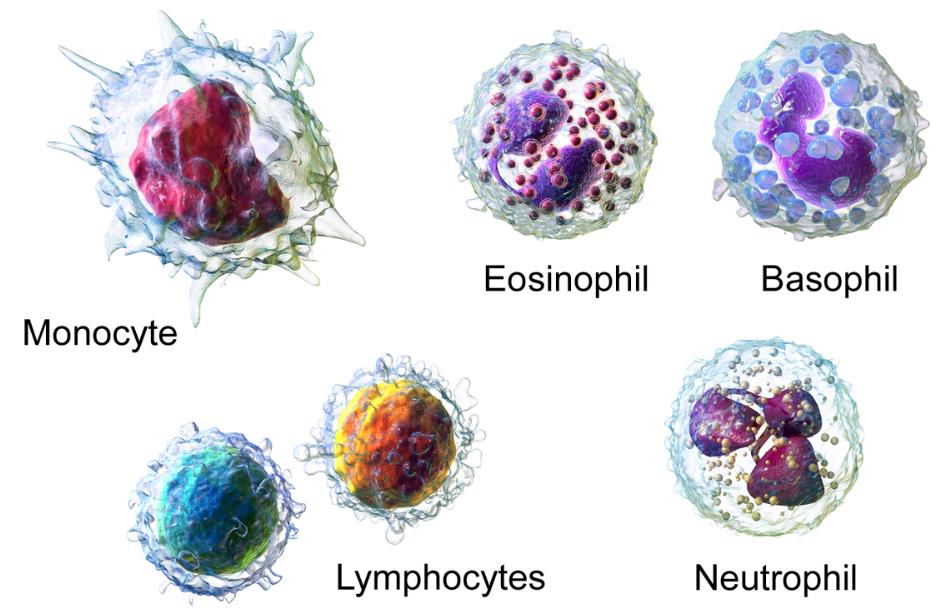
Preventing the Progression of Inflammation
The body’s white blood cells will continue to fight against the attacker until the underlying cause of the attack is extinguished. In the case of overworked and underfed immune systems, and those that are overwhelmed by the toxic or infectious load, chronic inflammation results.
Circulating white blood cells are eventually no longer recruited to sites of injury. Dysregulation of this process leads to uncontrolled chronic inflammation.
Underlying Causes of Chronic inflammation
Chronic inflammation can develop if a person has:
Exposure: Long-term, low-level exposure to an irritant, such as an industrial chemical
Autoimmune disorders: The immune system affects normal healthy tissue, as in psoriasis
Autoinflammatory diseases: A genetic factor affects the way the immune system works, as in Behçet’s disease
Persistent acute inflammation: In some cases, a person may not fully recover from acute inflammation. This can lead to chronic inflammation.
Factors that increase the risk of chronic inflammation include:
- older age
- obesity
- unhealthful fats and processed sugar
- smoking
- excess alcohol
- exposure to toxic chemicals, including air, water and food sources
- hormone imbalance
- nutritional deficiencies
- high stress
- poor sleep

Long-term diseases that doctors associate with inflammation include, among others:
- cardiac diseases
- stroke
- asthma
- allergies
- chronic peptic ulcer
- tuberculosis
- arthritis
- periodontitis
- ulcerative colitis and Crohn’s disease
- sinusitis
- hepatic liver disease
- Alzheimer’s
- cancer
Inflammation plays a vital role in healing, but chronic inflammation may increase the risk of various diseases, including some cancers, rheumatoid arthritis, atherosclerosis, periodontitis, and hay fever.
Chronic or acute inflammation?
The following table summarizes some key differences between acute and chronic inflammation.
| Acute | Chronic | |
| Cause | Harmful pathogens or tissue injury. | Pathogens that the body cannot break down, including some types of viruses, foreign bodies that remain in the system, or overactive immune responses. |
| Onset | Rapid. | Slow. |
| Duration | A few days. | From months to years. |
| Outcomes | Inflammation improves, or an abscess develops or becomes chronic. | Tissue death, thickening and scarring of connective tissue. |
TAKEAWAY: It is essential to identify and manage inflammation and related diseases to prevent further complications.
FAQ: Is inflammation painful?
Acute inflammation can cause pain of varying types and severity. Pain may be constant and steady, throbbing and pulsating, stabbing, or pinching.
Pain results when the buildup of fluid leads to swelling, and the swollen tissues push against sensitive nerve endings. Other biochemical processes also occur during inflammation. They affect how nerves behave, and this can contribute to pain.
Common Inflammation Treatments
Treatment of inflammation will depend on the cause and severity. Often, there is no need for treatment. The underlying issue resolves naturally. Sometimes, however, not treating inflammation can result in life threatening illnesses.
During an acute allergic reaction, for example, inflammation can cause severe swelling that closes the airways, making it impossible to breathe. This is clearly a medical emergency.
Without treatment, some infections can enter the blood, resulting in sepsis. This is another life-threatening condition that demands urgent medical treatment by trained practitioners.
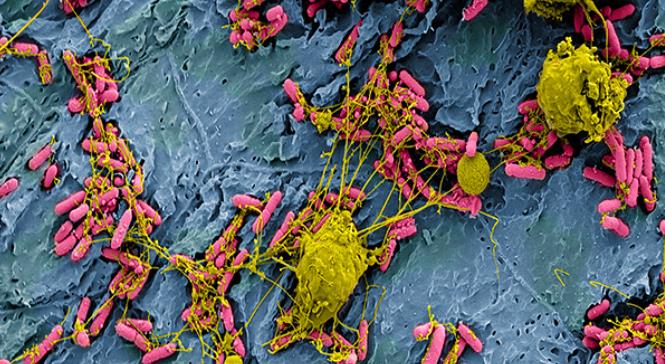
Treating Acute Inflammation
Doctors may prescribe drugs to remove the root cause of the inflammation, manage symptoms, or both. For a bacterial or fungal infection, for example, they may prescribe antibiotics or antifungal treatment, respectively
IMPORTANT NOTE: Antibiotics cause other physiologic imbalances in the body, and should be used for a very short time, if at all. When absolutely necessary, be sure to take a high quality probiotic along with and following the course of antibiotic treatment. This is crucial for rebuilding a healthy gut flora.
Failure to re-balance your gut will exacerbate the underlying cause of inflammation, and/or initiate new sources of inflammation.
Nonsteroidal Anti-inflammatory Drugs OTC
Nonsteroidal anti-inflammatory drugs (NSAIDs) are available over-the-counter (OTC) and can relieve inflammation. They won’t cure the underlying cause of the inflammation. But NSAIDs can help relieve pain, swelling, fever, and other symptoms in the short term. They do this by countering an enzyme that contributes to inflammation.
Examples of OTC NSAIDs:
- Aspirin (Bayer, Bufferin, St. Joseph)
- Ibuprofen (Advil, Motrin)
- Naproxen (Aleve, Naproxyn)
NSAIDs are also available for purchase online. Check first with a doctor or pharmacist to ensure you make the right choice for your situation.
Do not use NSAIDs long term unless your doctor recommends them, as they can have adverse effects. Aspirin is not suitable for children.
Pain reliever only: Acetaminophen, including Tylenol, can relieve pain but does not reduce inflammation. These drugs indirectly allow the inflammation to continue.
Note: All products are chosen based on our mission to highlight solid product quality, high customer satisfaction and reasonable pricing. This content is made possible because, as an Amazon Associate and participant in other affiliate programs, we may earn a small commission from qualifying purchases of some (but not all) of the products we highlight – at absolutely no cost to the Purchaser. (Learn More)
Products
Advil Pain Relief Medicine with Ibuprofen 200mg
Advil provides a powerful pain relief for headache, muscle ache, backache, toothache, menstrual pain, minor arthritis pain or joint pain.
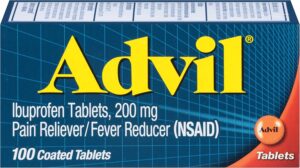
Product review:
I am already a user of Advil Liquigel and prefer it over Tylonel as I think it works better and faster. The gel capsule is efficient and easy to swallow comparing to other types of tablets. It has a myriad of usages and I had to use it frequently for a period of time when I had severe tendinitis and stopped prescription pain medication. The usage ranges from headaches, backaches, muscle aches, menstrual pain, minor arthritis and other joint pain, and aches & pains of the common cold.
Most importantly about this 2 gel package size – I bought this for my Bachelorette party to make hang over bags which I included the advil, emergency-C and other fun items for the night. I had plenty left and have found them very useful (comparing to say a tube of 10 tablet of pain killers). I would stuff the 2-gel package in my purse to have handy and it has come in handy very often! I also put them in my toiletterie bag for travels. After I ran out of the 50 package, I still bought more because I love the small package travel size so much. Very useful and convenient to have! – Mink
Amazon Basic Care Pain Reliever and Fever Reducer Naproxen Sodium 220 mg (NSAID) Caplets
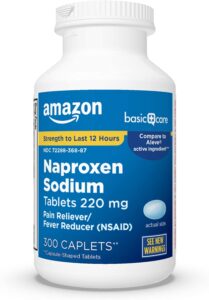
When minor aches and pains hold you back, try an all-day pain reliever like Amazon Basic Care Naproxen Sodium Tablets, 220 mg. This pain reliever and fever reducer is a nonsteroidal anti-inflammatory drug (NSAID) with the strength to last 12 hours. It helps to temporarily relieve minor aches and pains due to minor pain of arthritis, muscular aches, backache, menstrual cramps, headache, toothache, the common cold, and also temporarily reduces fever. For adults and children ages 12 years and older. Gluten free.
Product review:
All I can say is you will not regret this purchase. It did what was promised and then some. Maybe my body isn’t used to it or maybe it’s just me but my pain disappeared by 72 hrs before it started coming back. My joints and back during the winter is absolute murder and my job doesn’t help. First time trying this and I’ll never be without it in my home. 5 full stars!!! – Luka
Herbs for Chronic Inflammation
Various herbal supplements may help manage inflammation.
Harpagophytum procumbens: Also known as devil’s claw, wood spider, or grapple plant, this herb comes from South Africa and is related to sesame plants. Some older research from 2011 has shown it may have anti-inflammatory properties. Various brands are available to purchase online.
Ginger: People have long used ginger to treat dyspepsia, constipation, colic, nausea, and other gastrointestinal problems, as well as rheumatoid arthritis pain. Ginger is available fresh in groceries or online in supplement form.
Turmeric: Curcumin, the main ingredient in turmeric, may have benefits for arthritis, Alzheimer’s disease, and some other inflammatory conditions. Supplements with turmeric and curcumin are available online.
Cannabis: A cannabinoid called cannabichromene may have anti-inflammatory properties. Be certain to double-check that cannabis-related products are legal where you live.
NOTE: Herbs are not regulated by the Food and Drug Administration (FDA) for medicinal use. Always talk to a doctor before using any herbal or other supplements. Even though they are not regulated, they still contain chemical compounds that may interact with your current medications or supplements.
Products
Devil’s Claw Extract Powder
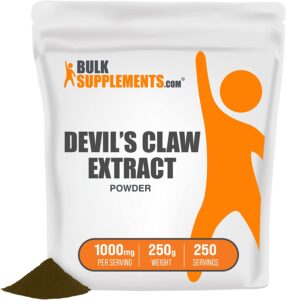
Devil’s Claw (Harpagophytum procumbens) is type of plant in the sesame family that is native to the Kalahari Desert of southern Africa and is also known as the Grapple Plant and Wood Spider. It gets its name from the unique appearance of the hard, hooked fruit.
This Devil’s Claw Extract is in powdered extract form. In addition, Devil’s Claw Extract has anti-inflammatory properties that may help support overall health and wellness.* Not only that it has anti-inflammatory properties, Devil’s Claw Extract Powder may help support joint health, as well as promote healthy joint function and mobility.
It’s also help support bone health, as joint and bone coincide with each other.* This Devil’s Claw Extract is sourced from Harpagophytum procumbens root and contains 1000 mg each servings. Lastly, our Devil’s Claw Extract is pure and natural without any fillers, additives, and artificial flavors. Not only that it’s filler free, it’s also gluten free, soy free, dairy free and especially no added sugar!
Product review:
I’ve been living with chronic pain since 2006. This has been keeping me as pain free as I get for 2 months with no side effects. That’s saying a lot. The taste is a bit weird but not “bad”, it has it’s own unique taste, I can’t think of anything to compare it to. Woodsy or earthy comes to mind. I’ve found it mixes very well with a cup of hot coffee, tea, or hot cocoa. I barely notice the taste and certainly am not bothered by it. – Kindle Fire Customer
Ginger Root (Zingiber officinale) 550 mg
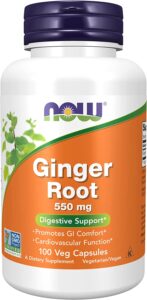
Ginger root (Zingiber officinale) has been used since antiquity to support digestive function, and ginger’s historical applications have been validated by modern research. Scientific studies have demonstrated that ginger may help to maintain healthy GI flora, aid the digestion of dietary fats, and calm and soothe the digestive tract. In addition, ginger possesses a number of constituents that may support healthy cardiovascular function and promote a balanced immune system response.
Product review:
This is a terrific more natural way to relieve an upset stomach. So much more effective than Pepto or other products. – Amplexus4
Curcumin 95 Veggie Capsules
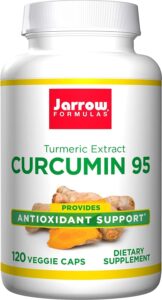
They superior science to make smarter formulas like Jarrow Formulas® Curcumin 95. It is highly concentrated in polyphenols known as curcuminoids, which are lipid-soluble antioxidants found in the turmeric spice. The turmeric extract formula includes 95% curcuminoids, providing antioxidant support. Curcumin and its metabolites support the body’s natural antioxidant glutathione levels, which, in turn, aids the liver in detoxification.
Product review:
Omg! I was reading up on what would heal boils cause I had 2-4 that popped up. The articles I’ve read said that turmeric kills the infection/bacteria(?) causing it to spread so for a week I’ve been taking turmeric milk with pepper but I couldn’t take it anymore (it doesnt taste good) plus I need more circumin for it to work. So I thought, why not buy a turmeric/circumin supplement??? So I tried this one! I went past the ones with pepper and all those gimmicky packaging because they have such SUPER LOW amount of circumin and just a bunch of turmeric and pepper.
This has WAY more and wanted to try a basic circumin and this WORKS! I cannot believe my boils shrinked faster than it would have naturally. – Danielle
NOW Supplements, Quercetin with Bromelain
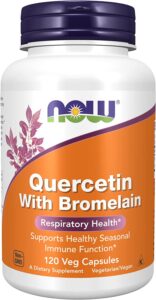
Quercetin is a naturally occurring free radical scavenger that supports healthy seasonal immune system function. Laboratory studies have demonstrated that quercetin can also help to promote normal respiratory function. Bromelain has a long history of use by herbalists and is known to help support a balanced immune system response to environmental challenges. This complementary combination may thus promote year-round respiratory health and support overall seasonal comfort.
Product review:
This supplement is very useful in improving many body functions – respiratory system, prostate, immune system. If you are short on colorful raw vegetables, this is a must. – Gurminder Singh
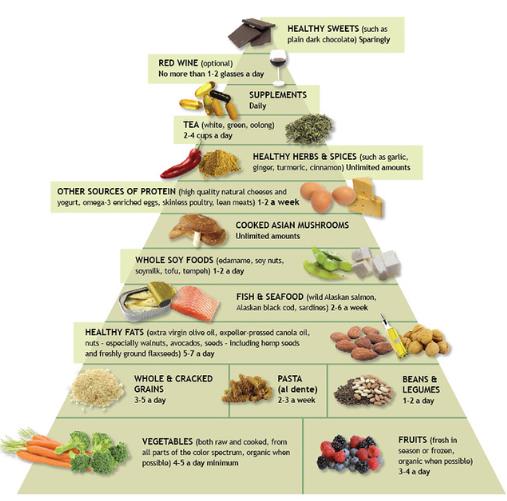
Anti-inflammatory diet
Some foods contain nutrients that help reduce inflammation. Be sure to buy organic in order to reduce the chemical burden:
- olive oil – use extra virgin, cold pressed whenever possible
- high fiber foods, like beans, broccoli, berries
- tomatoes
- nuts, such as walnuts and almonds
- leafy greens, including spinach and kale
- fatty fish, such as salmon and mackerel (wild caught NOT farm-raised!)
- fruit, including blueberries and oranges
Studies have reported that people with high levels of CRP had been less likely to have previously followed a diet rich in fresh products and healthy oils, such as the Mediterranean diet. Such a diet will lower inflammation.
Eaten regularly, these foods cause chronic inflammation:
- fried foods
- processed foods
- sugar
- red meat
- unhealthy fats, such as saturated and trans fats
Diet alone is not guaranteed to control inflammation. All lifestyle factors must be weighed and considered for healthy change. But simply making healthier food choices should at least help prevent inflammation from getting worse. And it will likely lower it.
Summary
Inflammation is part of the process by which the immune system defends the body from harmful agents, such as invaders, bacteria and viruses. In the short term, inflammation provides a useful and necessary service.
Long-term or chronic inflammation, however, can both lead to severe and possibly life-threatening illnesses.
People with tumors, rheumatoid arthritis, inflammatory bowel disease, drug reactions, and other health issues may have high levels of CRP, which is a sign of an inflammatory immune response.
As research scientists learn more about the role of inflammation in disease, their findings could lead to more effective treatments for various illnesses that do not respond completely to lifestyle and nutritional remedies.
References
- https://www.ncbi.nlm.nih.gov/pmc/articles/PMC7147972/
- https://factor.niehs.nih.gov/2020/1/papers/inflammation
- https://www.ncbi.nlm.nih.gov/pmc/articles/PMC5805548/
- https://www.ncbi.nlm.nih.gov/books/NBK557485/



